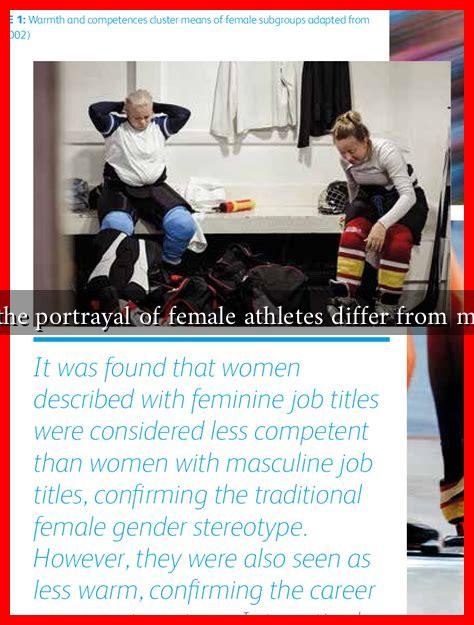-
Table of Contents
How Does the Portrayal of Female Athletes Differ from Male Athletes?
The portrayal of female athletes in the media and society has been a topic of significant discussion and analysis. While there has been progress in recent years, the differences in how female and male athletes are represented remain stark. This article explores these differences, examining the implications for gender equality in sports and society at large.
Historical Context of Gender Representation in Sports
Historically, sports have been male-dominated, with female athletes often receiving less attention and respect. The portrayal of women in sports has evolved, but remnants of outdated stereotypes persist. Key historical milestones include:
- Title IX (1972): This U.S. law prohibited gender discrimination in federally funded education programs, leading to increased opportunities for female athletes.
- Women’s Sports Foundation (1974): Founded by Billie Jean King, this organization has been pivotal in advocating for female athletes.
- Olympic Games: The inclusion of women in the Olympics has grown, with the first women’s events held in 1900, but it took decades for equal representation.
Media Representation: A Gendered Lens
The media plays a crucial role in shaping public perception of athletes. Studies show that female athletes are often portrayed differently than their male counterparts. Key differences include:
- Focus on Appearance: Female athletes are frequently depicted in ways that emphasize their physical appearance rather than their athletic prowess. For example, coverage of women’s sports often includes discussions about their looks, clothing, and personal lives.
- Less Coverage: Female sports receive significantly less media coverage compared to male sports. According to a 2020 study by the Women’s Sports Foundation, women’s sports received only 4% of sports media coverage.
- Language and Tone: The language used to describe female athletes often differs from that used for male athletes. Female athletes may be described as “aggressive” or “emotional,” while male athletes are often labeled as “strong” or “determined.”
Case Studies: Notable Examples
Several high-profile female athletes have highlighted the disparities in portrayal. Here are a few notable examples:
- Serena Williams: Despite her status as one of the greatest tennis players of all time, Williams has faced scrutiny over her appearance and behavior, often overshadowing her athletic achievements.
- Ronda Rousey: As a pioneer in women’s mixed martial arts, Rousey’s portrayal often focused on her looks and personal life rather than her skills and accomplishments in the octagon.
- Simone Biles: The gymnast has been celebrated for her athleticism but has also faced criticism for prioritizing her mental health, a topic that is often stigmatized in female athletes.
The Impact of Social Media
Social media has transformed how athletes connect with fans and promote their brands. Female athletes have leveraged platforms like Instagram and Twitter to challenge traditional narratives and gain visibility. Some key points include:
- Direct Engagement: Female athletes can share their stories and achievements directly with fans, bypassing traditional media filters.
- Body Positivity: Many female athletes use their platforms to promote body positivity and challenge societal beauty standards.
- Advocacy: Social media allows female athletes to advocate for gender equality and raise awareness about issues affecting women in sports.
Conclusion: The Path Forward
The portrayal of female athletes continues to evolve, but significant disparities remain. Addressing these differences requires a concerted effort from media outlets, sports organizations, and society as a whole. Key takeaways include:
- Increased media coverage of women’s sports is essential for promoting gender equality.
- Challenging stereotypes and focusing on athletic achievements rather than appearance can help shift public perception.
- Empowering female athletes through social media can create a more inclusive sports culture.
As we move forward, it is crucial to recognize and celebrate the accomplishments of female athletes, ensuring they receive the respect and recognition they deserve. By fostering an environment that values all athletes equally, we can pave the way for a more equitable future in sports.


